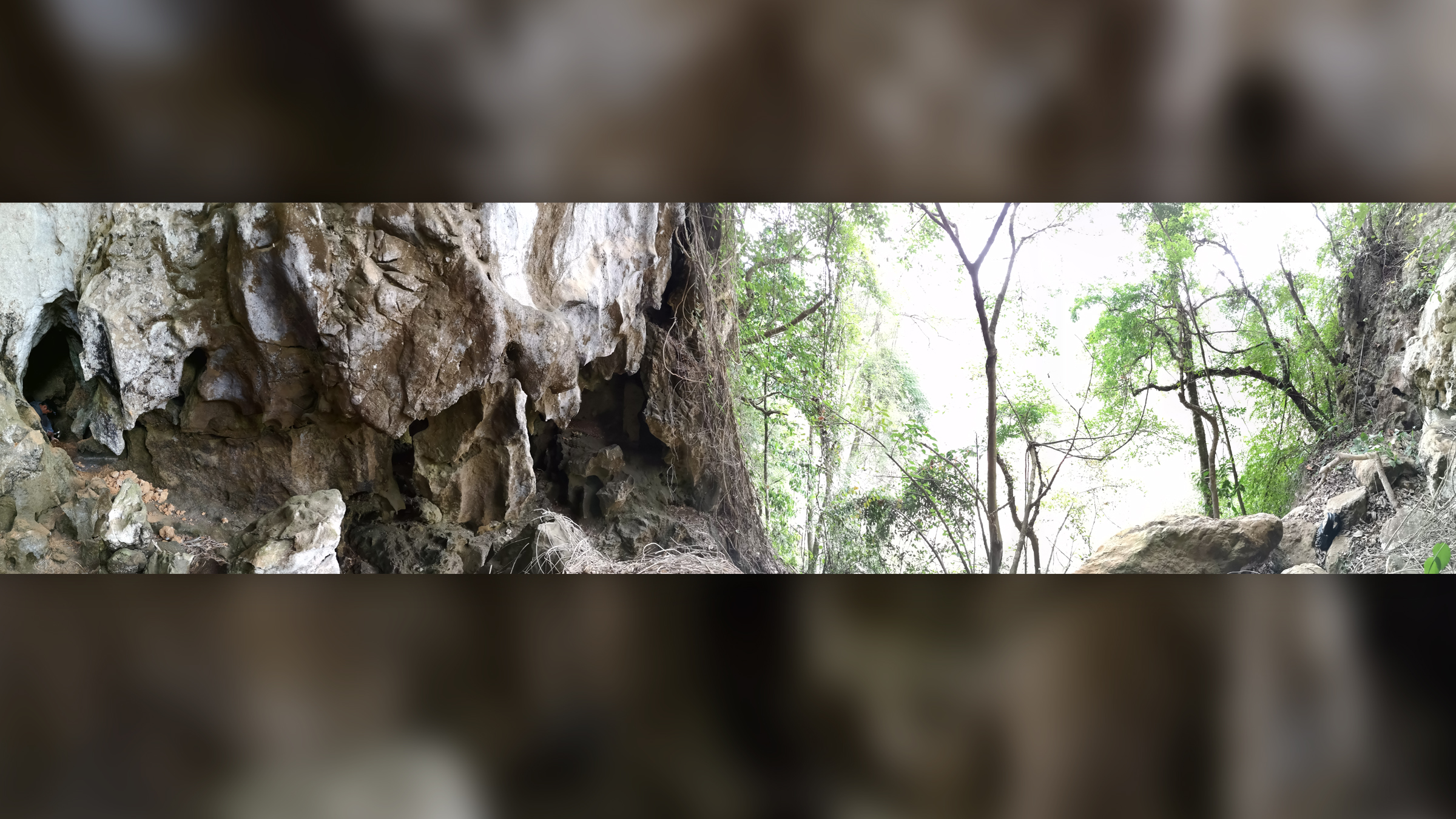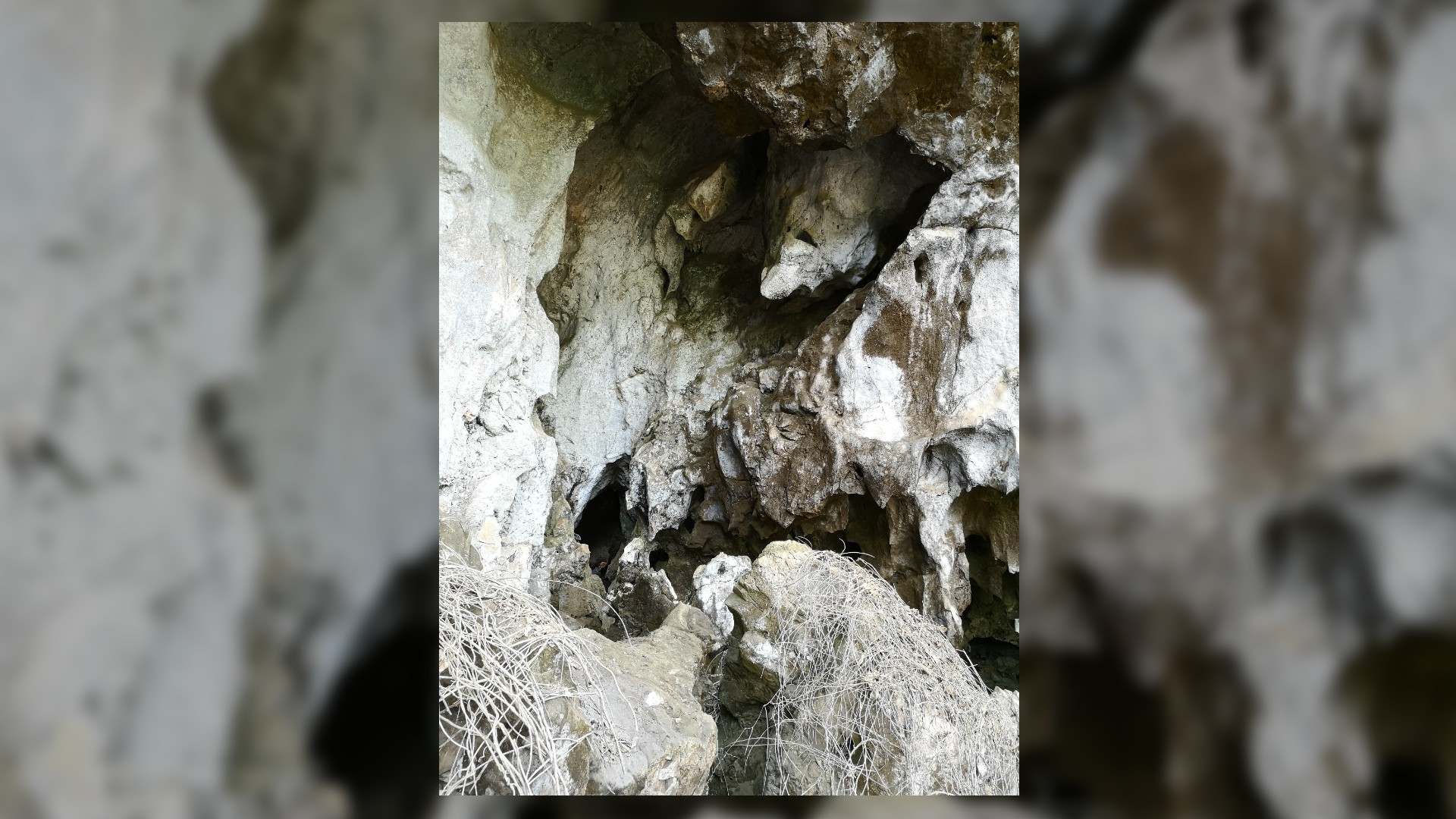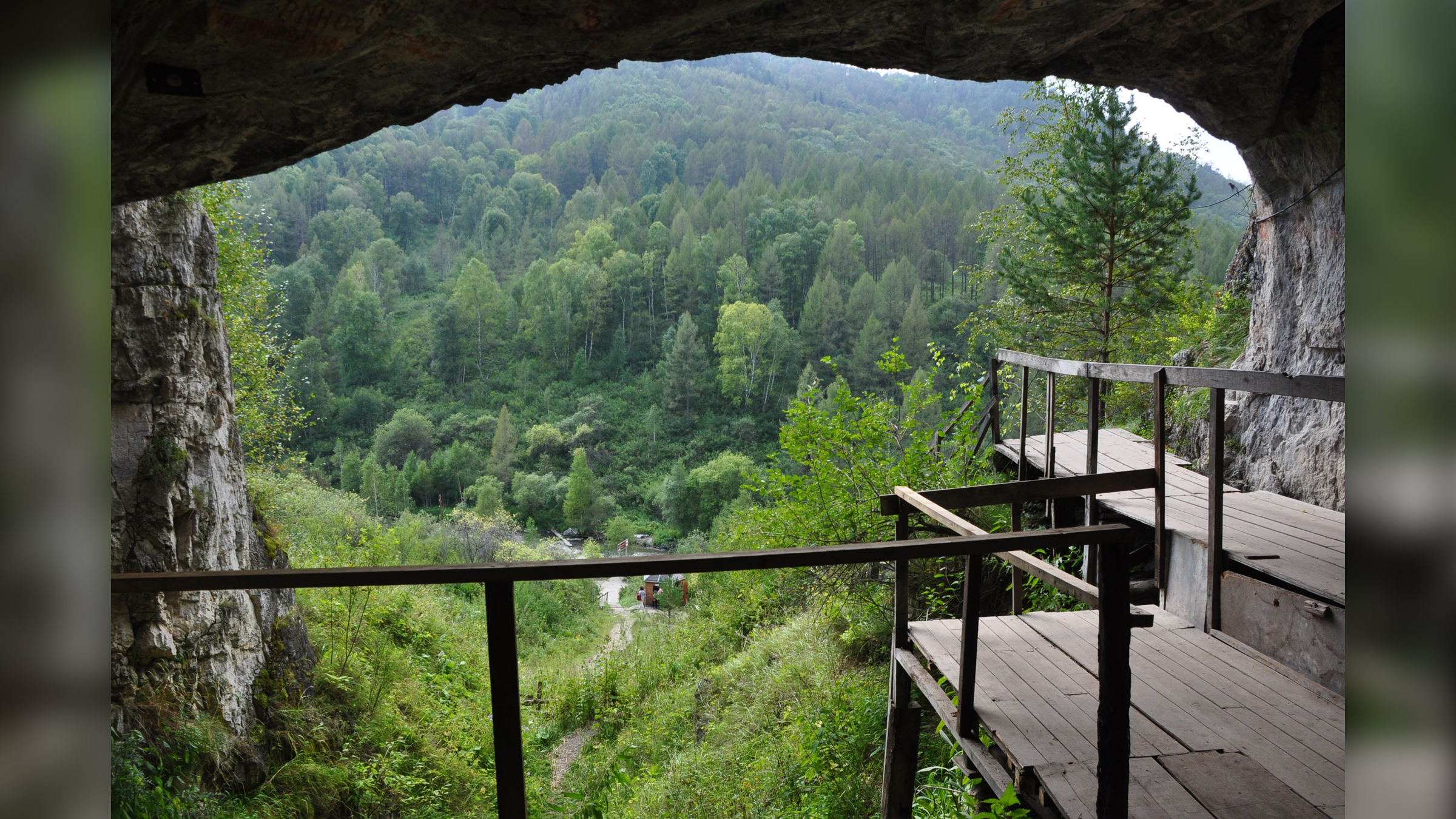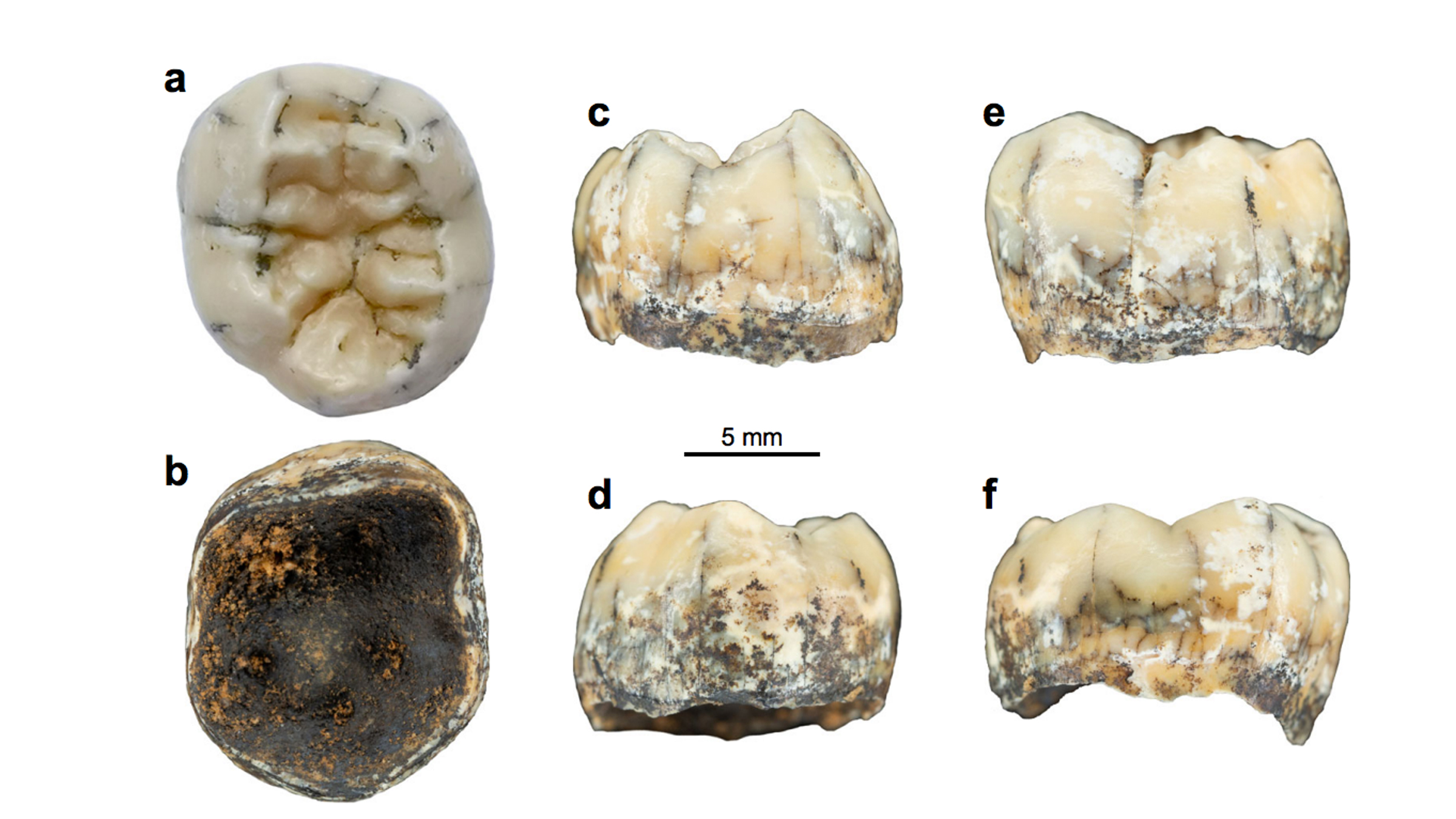Ancient tooth of mysterious Denisovan girl possibly found
The tooth may have belonged to a 3-year-old girl.

The discovery of an ancient molar — a tooth that likely belonged to young girl who lived up to 164,000 years ago in a cave in what is now Laos — is new evidence that the mysterious human lineage dubbed the Denisovans, previously known only from caves in Siberia and China, also lived in Southeast Asia, a new study finds.
"This shows that Denisovans lived in a wide range of environments and latitude and were able to adapt to extreme conditions, from the cold mountains of the Altai [in Russia] and Tibet to the tropical forests of Southeast Asia," study co-author Clément Zanolli, a paleoanthropologist at the University of Bordeaux in France, told Live Science.
"Genetic studies indicated that Denisovans were adapted to high altitude and cold climates, but now we also know that they were living in warmer and more humid climates and at low altitude," Zanolli added.
Although modern humans, Homo sapiens, are now the only surviving members of the genus Homo — the human family tree — other human lineages once lived on Earth. The closest extinct relatives of modern humans include the Neanderthals in Europe and Asia and the newfound Denisovan lineages of Asia and Oceania.
Related: Oldest-known fossils of mysterious human lineage uncovered in Siberian cave
Previous research estimated the ancestors of modern humans split about 700,000 years ago from the lineage that gave rise to Neanderthals and Denisovans, and the ancestors of Neanderthals and Denisovans diverged from one another about 400,000 years ago. However, genetic analysis of fossils of these extinct lineages revealed they remained close enough to interbreed with modern humans.
Much remains a mystery about Denisovans. So far, researchers have discovered only five fossils linked for certain with them — three upper molars, a finger bone and a jawbone — which greatly limits what researchers know about them overall. Scientists who discovered a skull in China dubbed "Dragon Man" claimed it belonged to a newfound species, Homo longi, but many other researchers suspect it may be a Denisovan skull.
Get the world’s most fascinating discoveries delivered straight to your inbox.
Where exactly Denisovans lived is also debated. The fossils unearthed to date all came from mainland Asia, but prior genetic evidence suggests people in Oceania and islands in Southeast Asia possess Denisovan heritage.
Now, the new tooth may be the first fossil evidence of Denisovans in Southeast Asia. "Any additional fossil described as a Denisovan is relevant to better understand their biology and evolution," study co-author Fabrice Demeter, a paleoanthropologist at the University of Copenhagen, told Live Science.
Scientists discovered the tooth in 2018 in a site known as Cobra Cave in the Annamite Mountains of Laos, which has an entrance located about 110 feet (34 meters) above the ground. The limestone cave, technically dubbed Tam Ngu Hao 2, was found due to its proximity to another site, where previous research unearthed ancient fossils of modern humans. (Cobra Cave also included fossils of animals, such as rhinoceros, tapirs and sambar deer.)




"Even if recent results of genetic studies suggested that Denisovans and modern humans met in southern Asia during the late Pleistocene [2.6 million to 11,700 years ago], we did not expect to actually find a Denisovan tooth in Laos," study co-author Laura Shackelford, a paleoanthropologist at the University of Illinois Urbana-Champaign, told Live Science.
The tooth was a molar that had not yet erupted from the left side of the lower jaw. This suggested it belonged to a child about 3.5 to 8.5 years old. Analyzing the dirt and rock surrounding the tooth with techniques such as luminescence dating, which analyzes how ago long mineral grains were last exposed to sunlight to estimate their age, and radioactive dating, which measures the age of things based on how long it takes certain chemical elements to radioactively decay, suggested the molar was between 131,000 and 164,000 years old.
By analyzing proteins in the tooth's enamel, the team confirmed it was from genus Homo. The absence of proteins linked with a Y chromosome suggests the tooth came from a female. (The researchers did not analyze the fossil for ancient DNA because this genetic material rarely preserves well in the type of sediment found in the cave and in tropical conditions present in Laos.)
Related: Neanderthals and Denisovans lived (and mated) in this Siberian cave
When the scientists compared this molar to teeth from other hominins — the group that includes humans, our ancestors and our closest evolutionary relatives such as Australopithecus — they found its internal and external 3D structure resembled that of Neanderthals, but fell slightly outside their known range of variation. Moreover, the tooth also differed from that of modern humans and Homo erectus, the first known human species to use relatively sophisticated stone tools. Although the scientists could not exclude it as belonging to a Neanderthal, they suggested its close physical similarity to a Denisovan specimen from China indicated that the molar was likely Denisovan.
"The tooth indicates that Denisovans were actually in Southeast Asia, which is significant for understanding their range," Shara Bailey, a paleoanthropologist at New York University, who did not participate in this study, told Live Science. "We know their DNA got there — it is present in recent Southeast Asian groups — but this indicates that the population was present in the area too."
Even if this new fossil turns out to not be Denisovan, any new human fossil from an area where few ancient human fossils have been unearthed so far, such as Laos, "is important, especially if it's a non-sapiens fossil, as this clearly seems to be," Chris Stringer, a paleoanthropologist at the Natural History Museum in London, who did not take part in this research, told Live Science.
Given that caveat, "I think it is a good study and the conclusions are strong," Bailey said. "I agree with their assessment of the tooth."
The new findings may shed light on the extent to which different human lineages may have coexisted. "Neanderthals lived in Europe and western Asia at the same time Denisovans occupied a large part of eastern Asia, together with other human groups like Homo erectus, Homo floresiensis, Homo luzonensis and modern humans," Shackelford said. "However, it is still unclear if, when and where all these extinct groups might have met."
These findings suggest other fossils in Asia need to be reanalyzed using modern techniques. "I believe we will find there are more Denisovans out there," Bailey said. "I know of one tooth in particular that I have seen that is probably Denisovan."
When it comes to future research, "I'm curious about how the tooth got into the cave and whether there is any human activity in the cave," Bence Viola, a palaeoanthropologist at the University of Toronto, who was not a part of this work, told Live Science. "The now-ongoing excavations should answer that."
The scientists detailed their findings online May 17 in the journal Nature Communications.
Originally published on Live Science.





